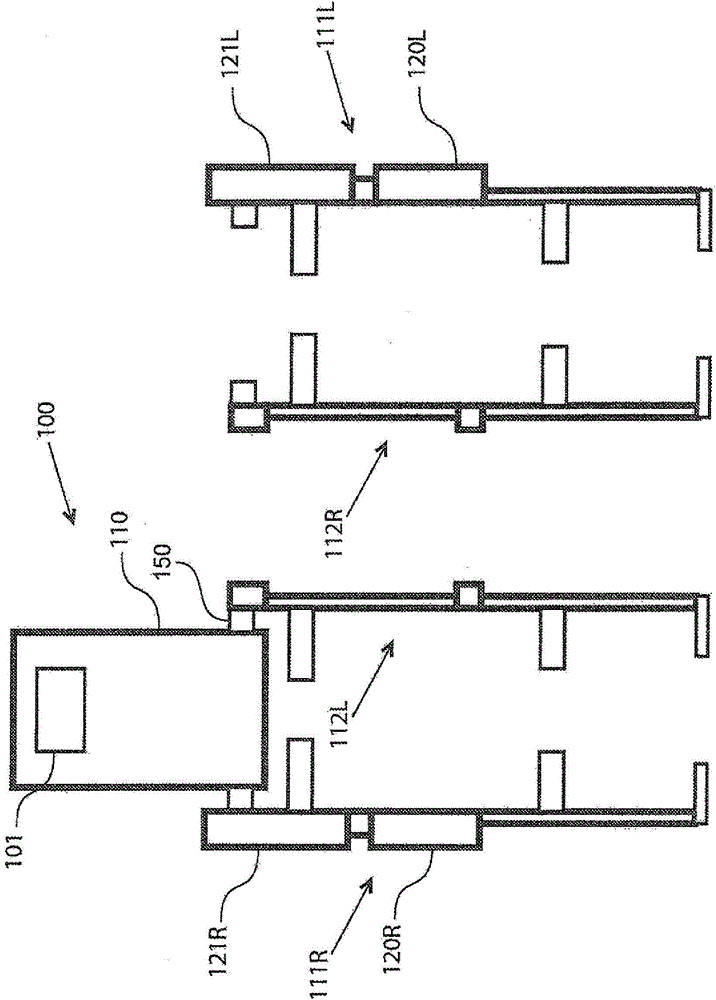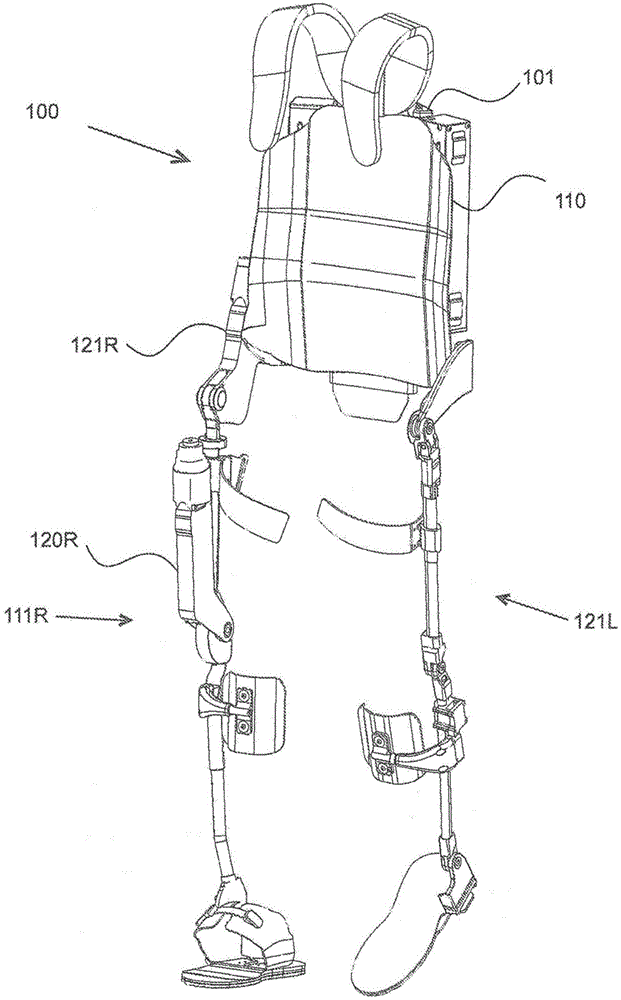Reconfigurable exoskeleton
An exoskeleton and support technology, which can be applied in the direction of tools to help people walk, passive exercise equipment, program-controlled manipulators, etc., can solve problems such as inability to use exoskeleton devices.
- Summary
- Abstract
- Description
- Claims
- Application Information
AI Technical Summary
Problems solved by technology
Method used
Image
Examples
Embodiment Construction
[0025] Extensive testing performed on stroke patients according to a human subject protocol has shown that stroke patients with chronic injuries could benefit from an exoskeleton in which the legs are exchangeable such that only one side of the exoskeleton is actuated. This knowledge leads to a first class of modular systems incorporating torque modifiers according to the invention as will now be described. In general, the first embodiment enables a single exoskeleton to enable paraplegics to walk and assist in gait training for stroke patients. These two groups are best served by different configurations of exoskeleton devices. A complete paraplegic may lack any muscle control below a certain height; in this case, each degree of freedom of the person must be controlled—using motors, passive elements (such as springs or dampers), or by simply moving the degrees of freedom locked. Conversely, a stroke patient may have less affected muscles controlling an almost normal side of...
PUM
 Login to View More
Login to View More Abstract
Description
Claims
Application Information
 Login to View More
Login to View More - R&D
- Intellectual Property
- Life Sciences
- Materials
- Tech Scout
- Unparalleled Data Quality
- Higher Quality Content
- 60% Fewer Hallucinations
Browse by: Latest US Patents, China's latest patents, Technical Efficacy Thesaurus, Application Domain, Technology Topic, Popular Technical Reports.
© 2025 PatSnap. All rights reserved.Legal|Privacy policy|Modern Slavery Act Transparency Statement|Sitemap|About US| Contact US: help@patsnap.com



